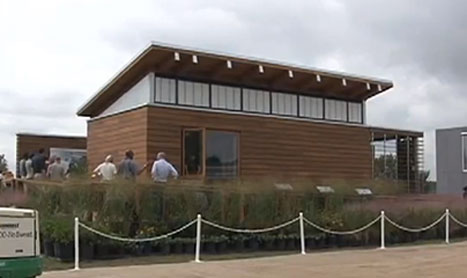WASHINGTON – A team from the University of Maryland built an eco-friendly home that placed first in the 2011 Solar Decathlon that ended Sunday.
The University of Maryland house — WaterShed — was built as a model of how sustainable living can help preserve watersheds like the Chesapeake Bay by minimizing water use, managing storm water onsite, and filtering water from the shower, clothes washer and dishwasher to be reused in the house.
Video by Margot Cohen/CNS-TV
“We just wanted to drive that point home that our usage on water has a huge impact on the environment around us,” said Lynn Khuu of the WaterShed team. “There are easy changes we can make to live more sustainably.”
The Solar Decathlon, sponsored by the U.S. Dept. of Energy, took place at the National Mall’s West Potomac Park in Washington, D.C.. It pitted houses built by 19 different university teams in a series of 10 contests over 10 days that judged performance, livability, affordability and other factors.
“These talented students are demonstrating to consumers the wide range of energy-saving solutions that are available today to save them money on their energy bills,” said Energy Secretary Steven Chu, who announced the winners Saturday.
During the competition the teams cooked, did laundry, and washed dishes to demonstrate the energy efficiency of their houses.
The houses, which cost from $250,000 to $600,000 to build, were designed to show consumers how to incorporate renewable energy systems into their homes.
Competitors for the U.S. Dept. of Energy Solar Decathlon were selected through an application process and took almost two years to build their energy-efficient houses that rely on solar energy.
Each house was awarded points during each of the 10 contests. In the end, the University of Maryland’s solar house finished with 951 points out of a possible 1000 points — a 20-point lead on Purdue University’s house, which took second place.
The University of Maryland also took first place in the architecture contest, in which the houses were judged on criteria like holistic design and lighting.
According to the U.S. Dept. of Energy, most of the houses are put on display and used for research after the competitions are over. Some are sold to recover costs or raise money for future teams.

